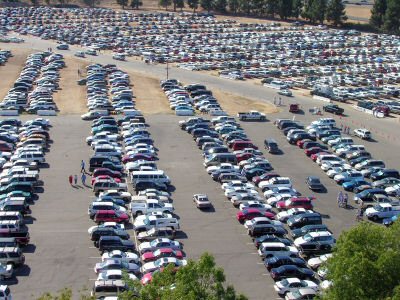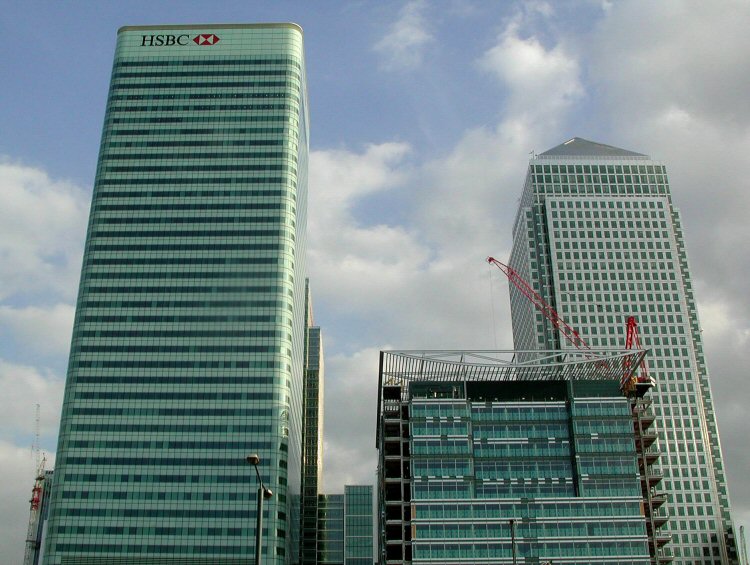The landscape of the London Docklands as we see it today is aesthetically very different to how it appeared as recently as thirty years ago. The area referred to as the London Docklands stretches from London Bridge for thirteen miles east along the River Thames, incorporating the London boroughs of Tower Hamlets, Greenwich, Lewisham, Newham and Southwark. When the Georgian docks began to open at the start of the 19th Century, they operated under the Port Of London Authority and ultimately formed the world’s largest port. The surrounding areas were populated by the families of those who worked on the docks and in related industries such as factories and warehouses; the docks were closed in 1980. Continue reading “The Changing Landscape of the Docklands Area”
Tips for London Start Ups
New business start ups are not only important to drive the economy but also to create new ideas and companies of the future. With London being the driving business capital of the UK, London start ups are of keen interest to many investors and business communities. If you have an exciting, innovative and sustainable business idea, now is a great time to push forward with it. Below are some tips and links on how to begin with your London start up.
Business Plan
Once you have your idea, be sure to create a solid and professional business plan. The importance of this cannot be underestimated as the plan will ensure you have focus on your objectives and how you will reach them as well as being crucial in obtaining funding and investment from external sources. Make sure you highlight your target audience and how you will market and promote your product or service to them. Sale projections are crucial to understand the business potential and will be expected by investors. Continue reading “Tips for London Start Ups”
Video Conferencing Tips
Video conferencing is becoming an ever more popular solution to connecting people in multiple locations by allowing the combination of both audio and visual interaction without the need to be in the same room. With rising fuel costs impacting travel expenses, video conferencing can not only be convenient and time efficient but can also reduce expenditure on conference rooms, car costs, airfares and entertainment. With more and more people, in both business and education, taking advantage of video conferencing, it looks likely this trend will continue to grow in popularity. Below are a few suggestions on how to make the most of video conferencing and ensure a good impression is made.
How to Save Money on Your Office Energy Bills
 Maintaining a successful company and running an effective office within the current economic climate is challenging enough. Add to that the inevitable consistent rise in energy costs you may agree that now is a good time to think about implementing an energy saving strategy within your organisation. Successful focus on, and management of, making your office space more energy efficient does not only provide the benefits of becoming a greener organisation but the change can almost certainly make some positive adjustments to your balance sheets.
Maintaining a successful company and running an effective office within the current economic climate is challenging enough. Add to that the inevitable consistent rise in energy costs you may agree that now is a good time to think about implementing an energy saving strategy within your organisation. Successful focus on, and management of, making your office space more energy efficient does not only provide the benefits of becoming a greener organisation but the change can almost certainly make some positive adjustments to your balance sheets.
Healthy Office Lunch Delivery Services in London
Business Parking in London
 London is a bustling and innovative city, with thriving business industry across the majority of sectors. Most London residents make use of the vast public transport system to avoid traffic and congested streets. However, there are many businesses located within London that require the use of vehicles to operate. Additionally, London is also the centre for a lot of business from across the UK, resulting in an increased number of business visitors entering the city, often by car. With an estimated 200,000 cars driving in London everyday, there is high competition for finding the most convenient parking space. If you rely on a vehicle for your business, or are travelling to London on business and planning to drive, below is some useful advice on how best to plan, locate and obtain parking where you need it.
London is a bustling and innovative city, with thriving business industry across the majority of sectors. Most London residents make use of the vast public transport system to avoid traffic and congested streets. However, there are many businesses located within London that require the use of vehicles to operate. Additionally, London is also the centre for a lot of business from across the UK, resulting in an increased number of business visitors entering the city, often by car. With an estimated 200,000 cars driving in London everyday, there is high competition for finding the most convenient parking space. If you rely on a vehicle for your business, or are travelling to London on business and planning to drive, below is some useful advice on how best to plan, locate and obtain parking where you need it.
Parking schemes and permits for business users.
The vast majority of London council boroughs offer business parking permits which are available to businesses, based in restricted parking zones, that require parking for the essential day to day running of their business. Obtaining a business parking permit allows parking within residential parking zones and ‘shared use’ bays which usually require pay and display tickets and each business can usually apply for 2 permits. Continue reading “Business Parking in London”
Survival Guide to Working in London During the Olympics
The first records of the Olympics date back to 776 BC. With some gaps in its historic every four-year calendar, due to world events and wars, now, in modern history, the Olympic games is arguably the biggest sporting event in the world with around 10,000 competitors from 204 countries and nations being involved in the games.
This year, London is the proud host of the Olympics 2012 with the opening ceremony due to start the proceedings on the 27th July at the newly constructed Olympic stadium in Stratford, East London. The whole event runs from 27th July – 12th August with events taking place across the city of London. Although the majority of these events will occur within the Olympic park in Stratford, the games are not only limited to this area. Some of the other 13 London venues include Earls Court, Hampton Court, Hyde Park, Wembley Stadium and Lords cricket ground. Continue reading “Survival Guide to Working in London During the Olympics”
Top Creative Companies in East London
East London, especially the Tech City and Shoreditch area is a major European hub for tech companies. Much of these tech companies are start-ups offering a variety of creative and innovative services. Tech City especially has a reputation for creativity. Entrepreneurs from all over the world reach out to this hub, seeking to leverage the facilities on offer, such as the presence of a vibrant community of entrepreneurs, financiers, creative artists and others, support services offered by Universities and government and more. Very few places in the world match such facilities.
Fast Growing Companies
Prominent start ups that have made it big in recent years include 7Digital, Eventbrite, INQ Mobile, Last.fm, Mendeley, Mind Candy, Moo Print, Playfish, SpliceTV, Spotify, Stylistpick, Ustwo, We7 and more. Continue reading “Top Creative Companies in East London”
Weird Place Names in London
Today, London is a dynamic global city and a cultural confluence, providing its lucky inhabitants with an exciting medley of places to see and things to do. With a history that stretches back well over 2,000 years, it is one of ye oldest cities on earth, and it has a varied and intriguing history spanning the reign of tyrannous kings, civil wars, the plague, and a constant cultural flux. All cities with such a history will sport plenty of peculiar place names that in today’s context might seem ridiculous, silly, or completely inappropriate. This article goes over some of the weirdest, funniest, and most inspiring place names that London has to offer.
The why behind the weird and the wonderful
In the London area, place names are usually named after landmarks and historical buildings, the trades and occupations that took place in a given area, the people who were vain enough to permanently imprint their contribution to the city, or after common London events, fairs and occasions. Continue reading “Weird Place Names in London”
Historic Tours of London
London is a busy and vibrant city with a colourful history.Whether you are interested in learning about the gruesome side of Victorian London or the history of the monarchy, or perhaps you just want an activity to encourage team building within a fun and relaxed atmosphere, there are many historic tours available that will appeal to people with different interests.
The Tower of London
The Yeoman warder tour (or beefeater as they are commonly known) is an entertaining and insightful tour of the Tower of London. A Yeoman warder will guide you through the history of the palace and the monarchy and provide information on the palace’s architecture, as well as grisly tales of the torturing of Guy Fawkes and the lives and deaths of Henry VIII and his wives. Continue reading “Historic Tours of London”

